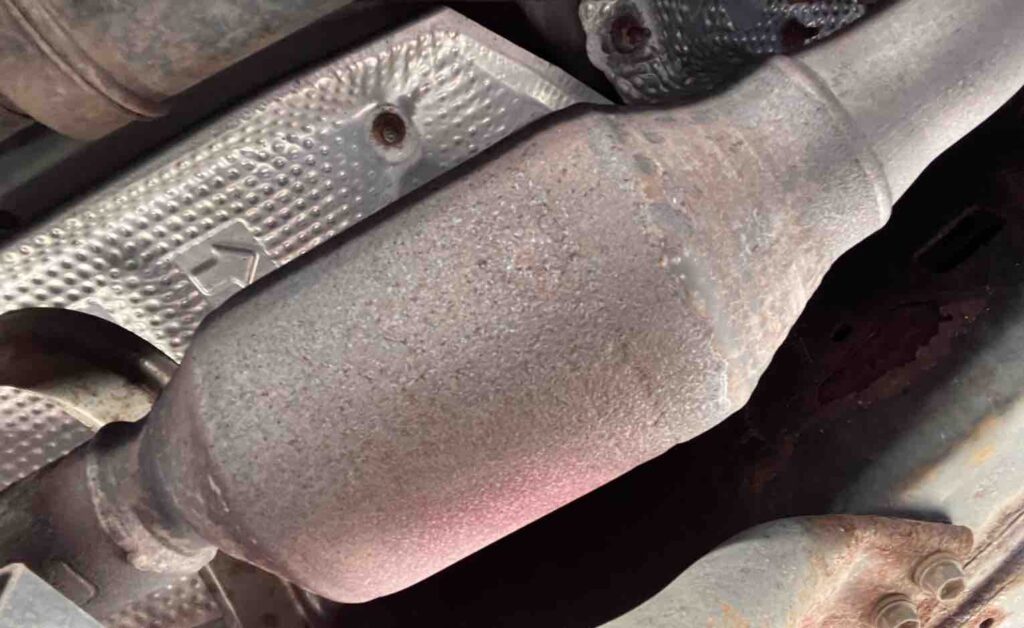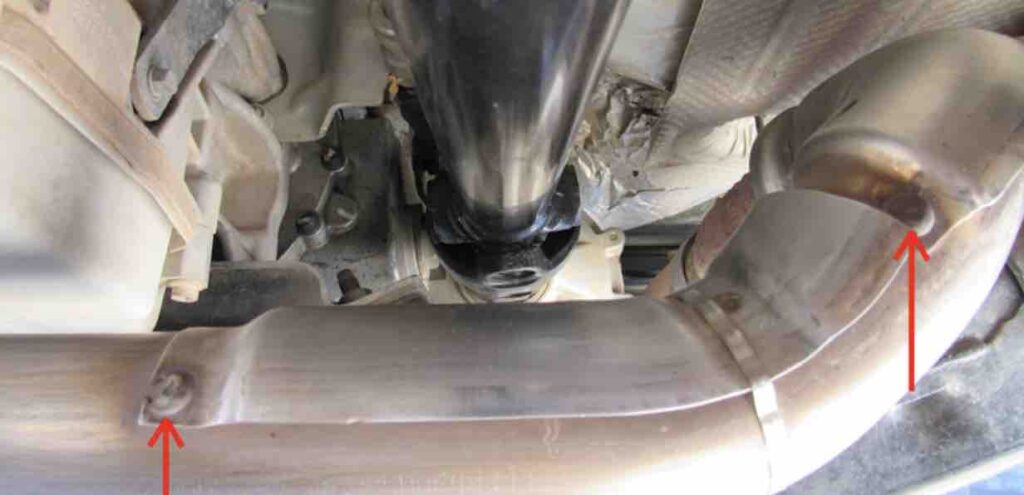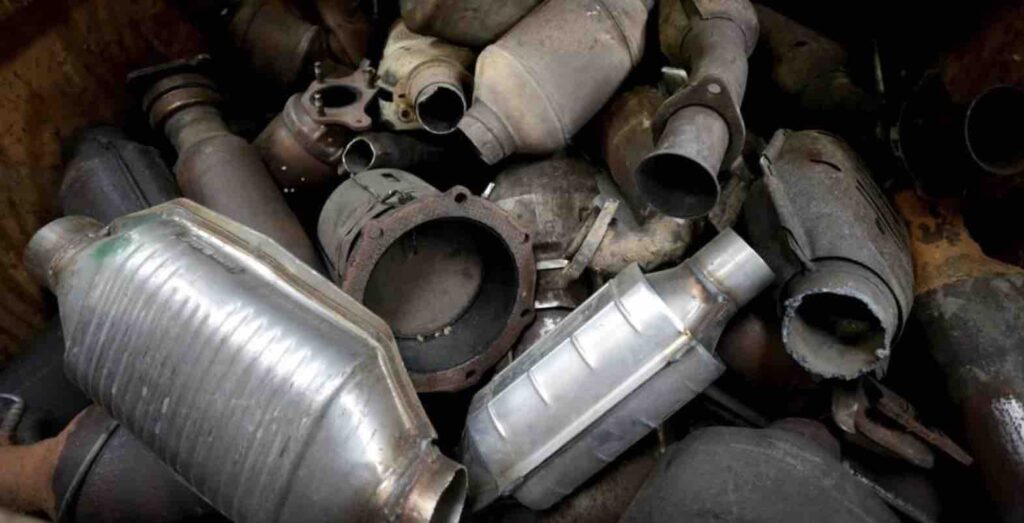Last updated on January 15th, 2023 at 10:01 am
It’s never a bad idea to cut costs. Unfortunately, the cost of replacing or repairing your catalytic converter does not always stop at the already high cost of parts and labor. You may be exacerbating your problems if you’ve been driving with a damaged or clogged catalytic converter, In this post, we are going to discuss the cheapest Way to Fix Catalytic Converter. ( Also See this on All About Seafoam)
The Cheapest Way to Fix Catalytic Converter
The most cost-effective way to fix your catalytic converter is without removing or replacing it. Explore any of these methods below to get your catalytic converter fixed. The affordable and Cheap ways to fix catalytic converter include;
- Troubleshooting Exhaust Issues
Damaged exhaust gaskets and corroded flex pipes are two persistent problems that can be fixed for a lot less money and are more effective than replacing a catalytic converter.
- Catalytic Converter Cleaning
One other possible solution is to remove and clean the catalytic converter. After removing the catalytic converter, clean the matrix with a pressure washer to remove any contaminants. Make sure the unit is flushed from both ends.
- Additives to Fuel
Cleaning out catalytic converter deposits might be possible with a different fuel or fuel additive. For example, try running your vehicle on a few tanks of high-octane fuel instead of the cheapest low-octane fuel.
- The engine is in good working order.
Fixing engine problems could save the catalytic converter from melting, depending on the extent of the damage already done. Other engine issues include a rich or lean fuel trim, oil or coolant burning, or even when the engine misfires. Is ok driving long distances with bad catalytic converter
On Average How Much It Cost to Fix Catalytic Converter?
Catalytic converter repairs do not have a set price, but they can cost anywhere between $1,000 and $2,500. Buying a universal fit catalytic converter rather than one made specifically for your vehicle is one way to keep costs down.
In these older cars, a catalytic converter replacement will cost between $175 and $750. Parts will cost between $100 and $600, with labor costing between $75 and $150. Keep in mind that, due to scarcity, a replacement cat for an older or rarer vehicle will be more expensive.
Nevertheless, please note that these are never as good as OEM products and may void any factory warranties.
It is usually preferable to replace a catalytic converter rather than figure out why it failed in the first place. It is sometimes possible to unclog a clogged one; however, remember to figure out why it was blocked in the first place. How to Use Sea Foam in Oil (Sea Foam in Oil Results)
What to do after replacing catalytic converter?
Begin the break-in procedure by starting the car after replacing the catalytic converter. First, allow the vehicle to idle in place without using the gas pedal. Then, get inside and give the car enough gas to raise the RPMs to around 2500 once the engine has reached operating temperature.
Release the gas after 2 minutes. Please turn off the engine and allow it to cool completely. That concludes your catalytic converter break-in. Cats must be broken in before use because the new components must be gradually exposed to high temperatures and pressures. During the initial warm-up period, all of the materials inside the catalytic converter can settle into place.
Do i have to replace oxygen sensor when replacing the catalytic converter?
It depends on whether the sensor after the catalytic converter shows minimal differences from the first oxygen sensor’s reading. This could indicate that the catalytic converter is malfunctioning. Alternatively, the oxygen sensor may need to be replaced.
Keynote
Faulty oxygen sensors frequently cause catalytic converter failures. Therefore, replacing O2 sensors as essential maintenance is recommended to restore peak fuel efficiency, reduce exhaust emissions, and extend and protect the converter’s life.
Your vehicle could have serious engine problems if either the oxygen sensor in the cylinder block or the one for the catalytic converter fails. If your oxygen sensor fails, the engine computer may be unable to set the air-fuel ratio properly. Eventually, this will reduce fuel economy, increase emissions, and cause damage to your catalytic converter.
I replaced catalytic converter check engine light still on; why is this so?
You should replace the oxygen sensors first to see if that solves the problem. One is located before the catalytic converter, and the other is located after it. This is required to detect catalyst efficiency accurately.
You can read the OBD trouble code stored in my car’s computer by purchasing an OBD diagnostic scanner from Amazon. A skilled mechanic may use a scope to diagnose the oxygen sensors or perform a vacuum or backflow test.
Multiple issues may cause your check engine light. For example, your oxygen sensor may have been replaced, but something else in your engine needs to be repaired or replaced.
- Oxygen sensor that has failed
- A catalytic converter that isn’t working is referred to as a failure
- Mass airflow sensor that isn’t working correctly.
- A gas cap that has come loose or is missing
- Spark plugs or worn-out wires
In this situation, you need to take your vehicle back to the technician to see what else needs to be done. Having to go to the auto shop several times a week could be exhausting. Furthermore, this is a much better way to ensure that your vehicle is in good working order and that no details have been overlooked. Free Catalytic Converter Price Guide(Scrap Worth/ Price List)
How to bypass catalytic converter check engine light?
In some cases, the catalytic converter can be removed and the system bypassed with a straight pipe.
Although the engine may run more efficiently without a converter because it doesn’t have to work as hard to push out exhaust fumes, it is illegal in some states due to its contribution to air pollution.
Therefore, bypassing should only be used as a short-term solution, and you should replace your catalytic converter as soon as possible.
Follow these simple steps to complete the bypass process.
The first half of the process:
- Place the vehicle on the parking brakes and drive it onto a level surface.
- Allow the exhaust system to cool by lifting the car with the hydraulic jack and lowering it onto the jack stands.
- Spray some penetrating fluid onto the catalytic converter mounting bolts under the vehicle. Allow 15 minutes for the penetrating fluid to work.
- The oxygen sensor wiring harness must be disconnected from the catalytic converter. Remove the sensor from the converter with an adjustable wrench.
- Remove the mounting bolts that hold the catalytic converter in place with the adjustable wrench. The catalytic converter should be placed on the ground.
The second half of the process:
- Connect the bypass pipe to the exhaust system where the catalytic converter was previously installed. Adjust the tube until the bolt holes on the bypass pipe’s flanges line up with the existing exhaust pipe’s bolt holes.
- Use an adjustable wrench to tighten the catalytic converter mounting bolts into the flanges.
- Try replacing the oxygen sensor in the bypass pipe fitting and tightening it. Connect the sensor to the car’s computer by plugging the wiring harness into it
- Remove the jack stand and lower the car to the ground using a hydraulic jack.
- Replace your catalytic converter right away if it’s broken.
New catalytic converter break-in period
Is there a break-in period for a new catalytic converter? A proper “break-in” period is necessary for a new catalytic converter. The substrate inside the converter may be adversely affected if the converter is not properly warmed up or broken in, and the converter may eventually fail.
Follow these steps to learn how you break in a catalytic converter:
- Turn on the engine but do not rev it;
- Allow the vehicle to warm up slowly by idling it.
- Increase engine speed to 2500 rpm after 5 minutes.
- For 2 minutes, spin at 2500 rpm; and
- Allow plenty of time for the vehicle to cool down.
The problem usually occurs when a shop installs a converter and returns the vehicle to the customer, the problem usually occurs. The customer drives away and either drive the car a long distance or leaves it idle for a long time.
The substrate-securing matting will not expand properly and hold it in place under these conditions.
New catalytic converter failed emissions
A catalytic converter is an exhaust system component that removes some harmful emissions. According to tests, the new prototype could save up to 3% on fuel in a standard vehicle.
How much does a catalytic converter reduce emissions? New catalytic converters, which are installed inside the exhaust pipe of a gasoline-powered vehicle, convert over 90% of hydrocarbons (HC), carbon monoxide (CO), and nitrogen oxides (NOx) from the engine into less harmful carbon dioxide (CO2), nitrogen, and water vapor, according to most estimates.
Diesel engines also produce particulates. Using a particulate filter in combination with a catalyst can reduce the mass of ultra-fine particles by 90% and the number of ultra-fine particles by 95%.
Why does replaced catalytic converter still have p0420 code?
You might have an exhaust leak at the manifold or pipes if both O2 sensors and catalyst were replaced. I recommend hiring a mechanic, such as one from Your mechanic will run a full diagnostic on the code and look for any issues.
What is the cause of the P0420 error code?
- Problems with computers
- A leaking exhaust pipe
- A catalytic converter that has failed
- Problems with the circuit
- A malfunctioning oxygen sensor
Inspect the O2 sensor, consider replacing the sensor first, clear the code(s), and recheck before condemning the catalytic converter if the signal drops when it shouldn’t or reads low voltage during WOT.
Do i need to replace my catalytic converter?
Yes, an active catalytic converter is required on every modern vehicle sold in the last 35 years. It’s used in the exhaust process to minimize toxic gases and ensure that the car passes smog tests. In this section, I will be highlighting 3 significant signs to look out for to know if you need a catalytic converter.
Basic signs to look out for;
- The amount of fuel used has risen.
- When the engine light is turned on.
- The performance of the engine, in general, is awful.
1. The amount of fuel used has risen:
If your car starts to use more fuel than it used to, it could be a sign of a problem with the catalytic converter. Unfortunately, this kind of sign is often subtle at first, making it difficult to detect. However, you’ll eventually run into difficulties listed in parts one and two, as well as a thirstier engine, so it’s worth asking your mechanic about it before it gets worse.
2. When the engine light is turned on:
The check engine light on your vehicle is intended to remind you of various vehicle problems, one of which is the need for a new catalytic converter. Keep in mind. However, that error codes related to a catalytic converter issue may not explicitly address that part.
3. The performance of the engine
Due to the wide range of software bugs that could show up when a catalytic converter needs to be replaced, it’s helpful to associate them with other signs that the part needs to be replaced. One of these outside indicators is poor performance.
Your catalytic converter may have failed, clogging the exhaust system to the point where your engine can no longer breathe efficiently. Also, if your vehicle has trouble accelerating like it used to, idles rough, or has difficulty starting, your catalytic converter may have failed.
How to change a catalytic converter yourself
Both gasoline and diesel engines use a catalytic converter. This equipment helps to reduce air pollution by controlling emissions from exhaust gases. A mechanical professional can replace this equipment, or you can do it yourself. Effects of Driving with a Bad Catalytic Converter
Follow these simple steps:
- Jack up the car and secure it with jack stands.
- Determine the location of the catalytic converter.
- Discard any oxygen sensors that have been installed.
- Apply penetrating oil to the affected area.
Only rusted bolts or a welded component make it more difficult and lengthen the catalytic converter’s time. On the other hand, it’s an easy job for a do-it-yourself mechanic to complete. After you’ve finished, start your car and make sure the check engine light is turned off.
FAQ:
What is the cheap way to fix catalytic converter in US?
The cheapest way(s) to fix your catalytic converter is to have it scanned and repaired without removing the catalytic converter itself by yourself. However, if doing it yourself is too much, you can reach out to an affordable auto shop in your area to help you out.
How much does it cost to fix catalytic converter?
Catalytic converter replacement is priced between $150-$250, depending on the workshop you visit to repair your vehicle.
How much does it cost to replace a catalytic converter on a ford f150?
Prices may differ depending on where you are. However, a Ford F-150 Catalytic Converter Replacement costs $625 on average, with $368 in parts and $256 in labor.
How much does it cost to replace a catalytic converter on a honda civic?
Estimation of the cost of replacing the catalytic converter on a Honda Civic. Labor costs are expected to range from $88 to $111, with parts costing between $1,560 and $1,563.
How much does replacing a catalytic converter on a Honda Accord cost?
Estimate of the cost of replacing the catalytic converter in a Honda Accord. Labor costs are expected to range from $96 to $121, with parts costing between $1,970 and $1,971.
I hope this article on the Cheapest way to fix a catalytic converter has helped you? Please be sure to share and bookmark this page for future reference.
Related Post:

Hi dear, I am Dennis Gift, an autobody repair technician with over 4 years of experience; and I love everything about fitness and cars and researching and sharing my experience. And this is where I get to do that freely without reservations. So come along with me.



